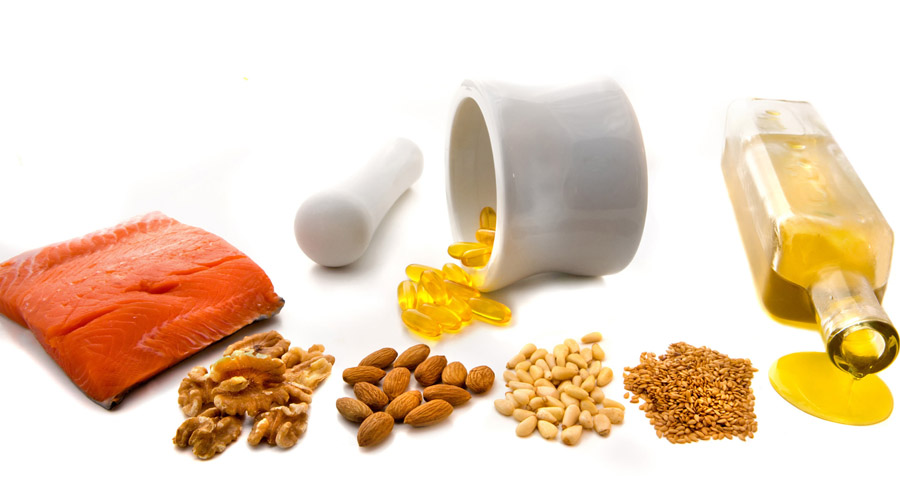
The Post about Counting Macros/Calories
What are Macronutrients
There are three macronutrients, or Macros:
- Proteins
- Fats
- Carbohydrates
And, technically, alcohol is a stand-in fourth (told you I got you)
-
Protein

Flank steak, extra rare.
What’s it do?
Well, adequate protein intake will help build muscle and/or prevent muscle loss if you are in a calorie deficit. It controls appetite and staves off hunger better than fats or carbs as it causes you to feel full longer.
It also requires more energy than other macros for your body to digest, thus effectively burning more calories gram for gram through the digestion process.
All of these reasons make high-protein diets great for fat loss.
Where do you get it?
Meat, fish, eggs, dairy and protein shakes are all good sources.
There are many commonly cited “good” protein sources, like nuts or beans, that are actually terrible sources of protein. Only about 15-20% of the calories in these foods come from protein.
Almonds, for example, are 73% fat and only 14% protein. This is not to say you shouldn’t eat almonds, but it explains why “nuts are great protein!” is rarely coming from a credible source.
How much do you need?
It really depends on your weight, bodyfat % and goals – as low as 0.5 grams per pound of lean body mass (per day) and as high as 1.5-2 grams per pound of lean body mass.
Lean body mass is your total bodyweight minus your fat. For example, if you weigh 200 pounds and are 20% bodyfat, your lean body mass is 160 pounds, or 200 – (200*20%).
So, if you weigh 200 pounds and have 160 pounds of lean body mass, 0.5 grams per day would be 160*0.5 = 80 grams of protein.
Fat
What’s it do?
Fat is an essential nutrient that our bodies require to live; it assists in vitamin absorption, hormone regulation, brain function, and more.
Where do you get it?
Meat, fatty fish, nuts, nut butters, oils and countless other sources.

How much do you need?It depends on your weight, bodyfat percentage and goal – probably somewhere between 15% and 45% of your total calories. However, it can vary based on your total calories consumed and whether you are in a caloric surplus or deficit. Somewhere between 0.35-0.7g per pound of lean body mass is a good range.
Carbohydrate
What’s it do?
Carbs are stored in the liver, brain, blood and muscles as glycogen. Our bodies use carbohydrates for energy.
Where do you get it?
Fruit, vegetables, grains, many processed foods/drinks, and seemingly everything you obsessively craved in the middle of the night causing you stand in front of the fridge making life decisions.
How much do you need?
It depends. Technically, you can live on zero carbs. But, bodybuilders or endurance athletes have consumed 700+ grams per day. So, the range is pretty wide.
0.5-2 grams per pound of lean body mass is probably a decent range, again, depending on activity level, weight, bodyfat percentage and goals.
Alcohol

What does it do?
Well, it can make you cooler, funnier and more social, or possibly louder, angrier and more violent; it can make you more confident or more dumber, better or worse at sex, euphoric or depressed — all depending on who you are and how much you drink, of course.
In all seriousness, alcohol is not an essential nutrient, but it does contain calories which is why it stands in as a fourth macro.
Where do you get it?
From teh booze, duh Beer, wine, liquor and what you will have to ingest after all of those, mouthwash.
How much do you need?
As much as it takes to forget your problems, comfortably interact with the opposite sex, and pump your brain with enough dopamine to make barely tolerable co-workers new BFFs (for the time being).
Counting Macros versus Counting Calories
So, you will definitely lose weight if you focus solely on calories and consume fewer calories than you burn. That’s plain science. And if there was one thing we learned from the the guy that ate Twinkies all day, it’s that the laws of thermodynamics (calories in – calories out) are for real.
But the QUALITY of your weight loss will suffer if you ignore the macronutrients.
For example, inadequate protein during a calorie deficit will cause you to lose muscle. Inadequate fat intake will negatively impact many of the hormones that help your continued weight loss, especially for women. Inadequate carbohydrate intake can negatively impact energy throughout the day and more importantly your performance in the gym. Adequate alcohol intake can severely impair your judgement, cause excessive overeating, dehydration, and regretting your decisions the next morning during that walk of shame!
So, while you can drop weight by counting calories, I’m pretty sure you aren’t just interested in dropping weight. You want a sexy, athletic, healthy body.
Men think Alpha Male
Women think Slim Thick
For that, counting calories ain’t enough. You have to count your macros. But if you are one of those hard headed people that want to count calories just because you want to. then here you go.
Each macronutrient yields a specific number of calories.
- One gram of protein yields 4 calories.
- One gram of carbohydrate yields 4 calories.
- One gram of fat yields 9 calories.
- One gram of alcohol yields 7 calories.
Determine what your total intake is for each of these macronutrients and multiply it by the number of calories that source yields and there you go… Calories
How to Determine Your Macro Intake
The next step is to craft your macronutrient ratio. Sadly it’s not that simple. There’s no such thing as a single ideal or “magical” macronutrient ratio. People have different goals, and so they have to take a different road in order to reach their ideal body.
FACTOR 1: FITNESS GOAL
Firstly you need to decide what is more important to you: building muscle or losing fat. A lot of us want both at the same time and lean mass gains can occur alongside fat loss, as it is the case in carb-cycling or intermittent fasting. However you will achieve better results by tackling one goal at a time. That is because higher carbohydrate ratio augment muscle gains whereas lower carbohydrate ration tend to accelerate fat loss.
As you can see from the pie charts above, fat never goes below 15% of total calories. Although widely demonized, fat is absolutely essential for the proper functioning of our bodies. Since hormones are constructed from cholesterol and other fat molecules, consuming too little fat can actually suppress the normal hormone levels. This also has a negative effect on bodily functions that depend on those hormones. This includes growth, metabolism, reproduction and more. Fat is also necessary for vitamin and mineral absorption.
However not all fat is created equal. Not all fat has the same nutritional value to your body so it’s important you prioritize healthy fat sources like monosaturated fats ( these include egg yolks, nuts, olive oil), medium-chain triglycerides (coconut oil), and omega-3 fatty acids (salmon, chia seeds, tofu, beans, wild rice). As long as you choose the right kind of fat, you can feel comfortable with adding it to your diet!
FACTOR 2: BODY TYPE
As well as your fitness goal, it is also important to consider your body type. This will help you determine how well your body tolerates carbs.
There are three general body types: ectomorph, mesomorph, and endomorph. Very few people fall perfectly into one of the three categories and many of us fall somewhere in between. Even if you find yourself to be somewhere in the middle, these body categories are helpful for establishing a nutritional benchmark. Start with the body type that you most resemble and make adjustments if necessary.

ECTOMORPHS are thin or slender individuals. This profile is linked to a fast metabolic rate and a high carbohydrate tolerance. They find it hard to gain weight and put on mass but it’s easy for them to get lean. They tend to require a greater percentage of carbohydrates to prevent muscle catabolism, as well as a higher calorie intake overall.
Diet recommendations: Higher carbs and lower fat. A nutrient distribution for this body type might be around 55% carbs, 25% protein, and 20% fat.
MESOMORPHS is someone who trends toward being muscular. Mesomorphs tend to be testosterone and growth hormone dominant. This profile leads to a predisposition for muscle gain and the maintenance of a lower body fat. They can handle a moderate level of carbs due to their ample capacity to store muscle glycogen. Weight gain will happen, however, if carbs and calories are overly high.
Diet recommendations: Mesomorphs typically do best on a mixed diet, consisting of balanced carbohydrates, proteins, and fats. A macronutrient split of 40% carbohydrate, 30% protein, and 30% fat can work well.
ENDOMORPHS have a larger bone structure with higher amounts of total body mass and fat mass. They typically have a round or pear-shaped body and a slower metabolism. This profile leads to a greater propensity for energy storage, including both lean mass and fat mass. This can also mean a lower carbohydrate tolerance.
Diet Recommendations: More fat and protein, less carbohydrate. Endomorphs typically do best on a higher fat and protein intake with carbohydrate intake being controlled and properly timed (e.g., after exercise). A nutrient distribution for this body type might be around 25% carbs, 35% protein, and 40% fat.
FACTOR 3: GENDER
Gender, although a less pronounced factor than goals or overall body type, it is still important to consider when calculating your macros.
In general, women are more efficient at burning fat and less efficient at burning the glycogen stored in muscle. As such, they may be able to operate on lower carbohydrate intake than men.
This however doesn’t necessarily mean that women should always have a lower carb intake. An ectomorphic woman, for example, training at high intensity would need more carbohydrates than an endomorphic man who is sedentary. On the other hand, a mesomorphic male who is trying to maintain weight is likely to require a higher percentage of carbohydrate, perhaps in the range of 40 percent, while a woman of the same body type with the same goal may wish to start at around 30 percent.
How to Calculate your Macronutrient Intake

Now that you calculated your calories and have options for your macronutrient ratios, you can now break down your macros so you know how many calories you should spend on each macronutrient.
I will use myself as the example. I weigh 247 lbs. So my caloric intake per day for wanting to lose weight should be around 2600 calories.
Let’s say that I choose a 40/30/30 (C/P/F) ratio for my macro breakdown (pretty standard ratio for a balanced diet)
First I multiply my carb macro percentage by 2600 calories to determine your total calories for carbs.
.40% * 2600 = 1,040 calories
Then I divide that number by 4 (remember 4 calories per 1g of carbs)
1,040 /4 = 260
So I would need to have 260g of carbs per day.
You would follow these same steps to determine your protein and fat intake. (remember 4 calories per gram of protein and 9 calories per gram of fat)
Protein
.30 * 2600 = 780 780 calories for protein
780 / 4 = 195 195 grams of protein per day
Fat
.30 * 2600 = 780 780 calories for Fat
780 / 9 = 87 87 grams of Fat per day
So from this you can see that my daily intake would be as follows.
195 grams of protein per day
260 grams of carbs per day
87 grams of fat per day
or 2600 calories.
For those that need to have a “taste” every now and again or hit happy hour after a hard day. Remember to cut your carbs by more than half(easiest thing to do is focus on eating more veggies those days)!! Then you can feel a little less guilty about knocking back a few! Just don’t wake up the next morning and see someone next to you that will have you regretting life!
I think i will stop here for this post. If you have more questions about this, please feel free to leave them in the comments section. Eat Smart!!!






